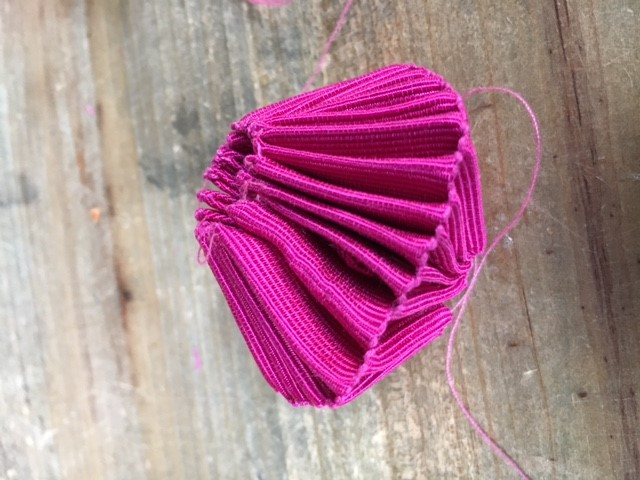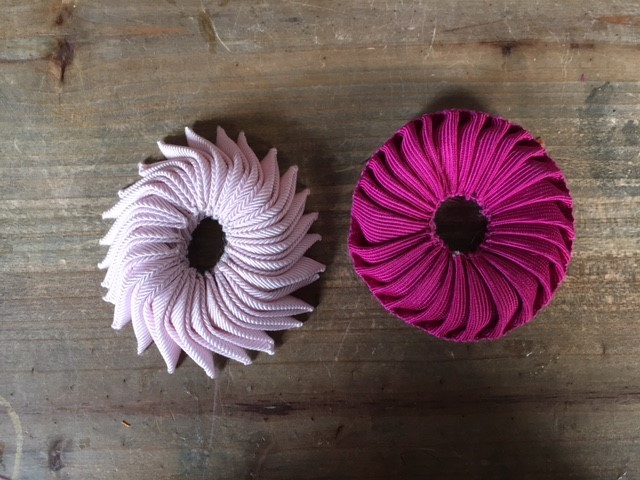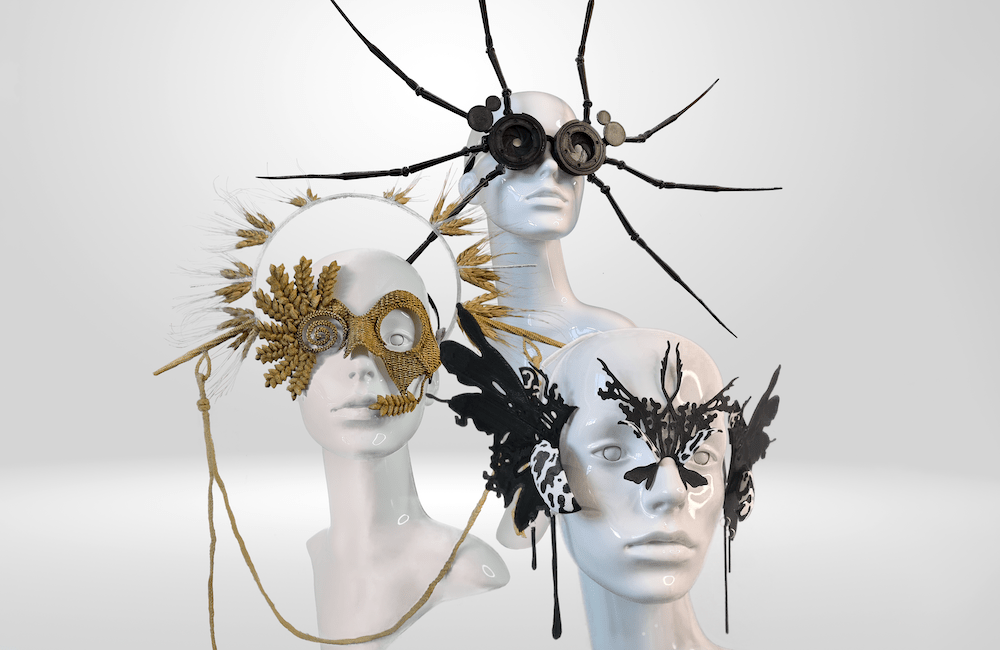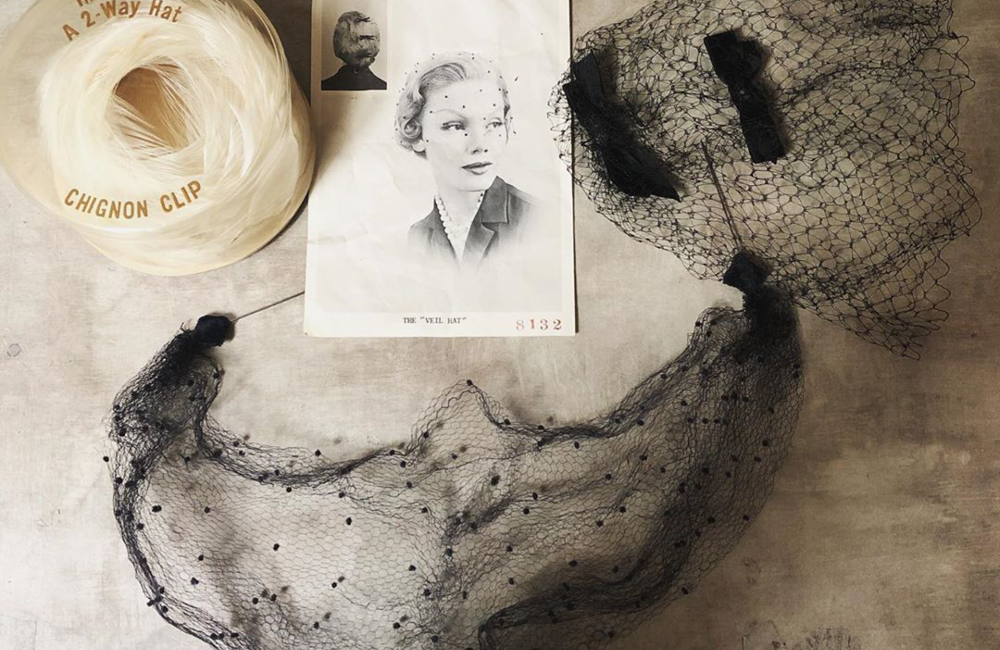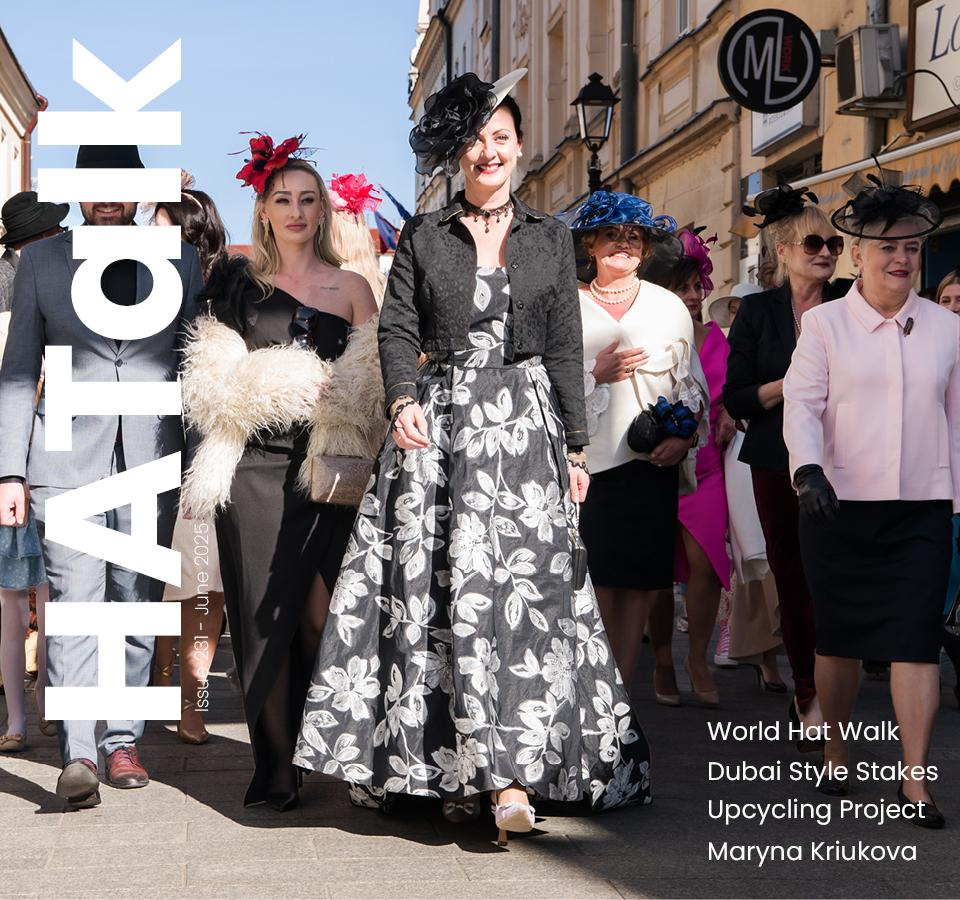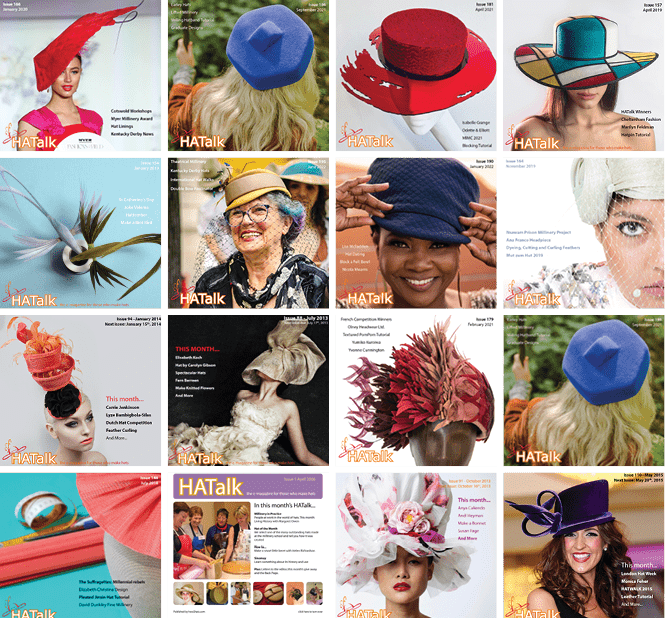Blog / Ribbon for Hat Making
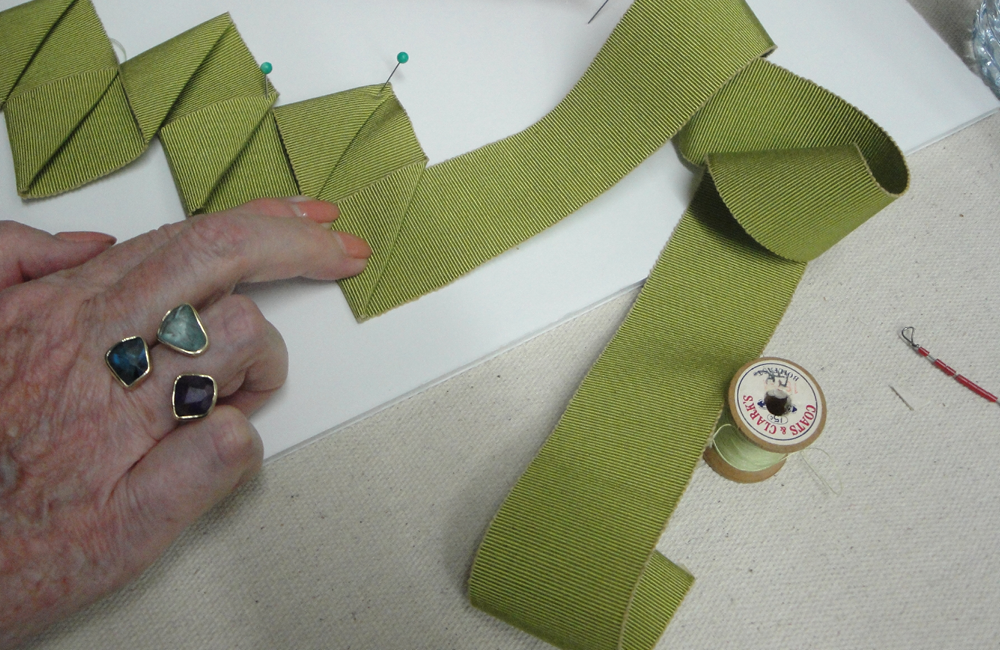
Ribbon for Hat Making
Millinery Ribbon
It might seem like a small detail, but don’t underestimate the importance of ribbon for hat making. In nearly every hat you will see a ribbon headband, even in hats without linings. Ribbon has also been used to make high-end trims for hats, such as extravagant bows, cockades and flowers, for centuries.
There is a vast variety of ribbon to choose from, so it can be overwhelming to find what you need when first starting out as a milliner or hat maker. You will no doubt develop your own style that will influence what types of ribbons you use in your trim designs, but there are some basics that are helpful to keep on hand in your studio.
Petersham & Grosgrain
One of the most confusing things about millinery ribbon is understanding the difference between grosgrain and petersham. You will often see their names used interchangeably, but there is a difference between them. The easiest way to tell the difference is by looking at the edge. Petersham ribbon has a ribbed edge with distinct bumps (as shown in the photo below), while grosgrain has a smoother edge. Both types of ribbon come in a variety of widths and are useful to have on hand for your projects.

Using Ribbon for Hat Making
Headbands and Hat Bands
Petersham is commonly used for making the inner headband, or sweatband, of a hat and for the outer hat band, to cover the join between the crown and the brim. For inner headbands, a 1”(2.5cm) width is generally used. The scalloped edge helps the ribbon to curve when heated, which will help prevent any puckering when lining a round shape.
To curve Petersham ribbon, cut the piece to fit the circumference of the hat, with about a 10 cm overlap to be folded under. Heat an iron to high and begin on one end of the ribbon, pulling it under the iron at an angle. By pulling at an angle you will put a slight curve in the ribbon while it is ironed. Reposition as needed and continue until you get a smooth curve on the whole length of ribbon. The shorter side curve will be the top edge of the ribbon when you sew it into the hat. To hide your stitches, sew in between the bumps (making a tiny stitch about every two bumps).
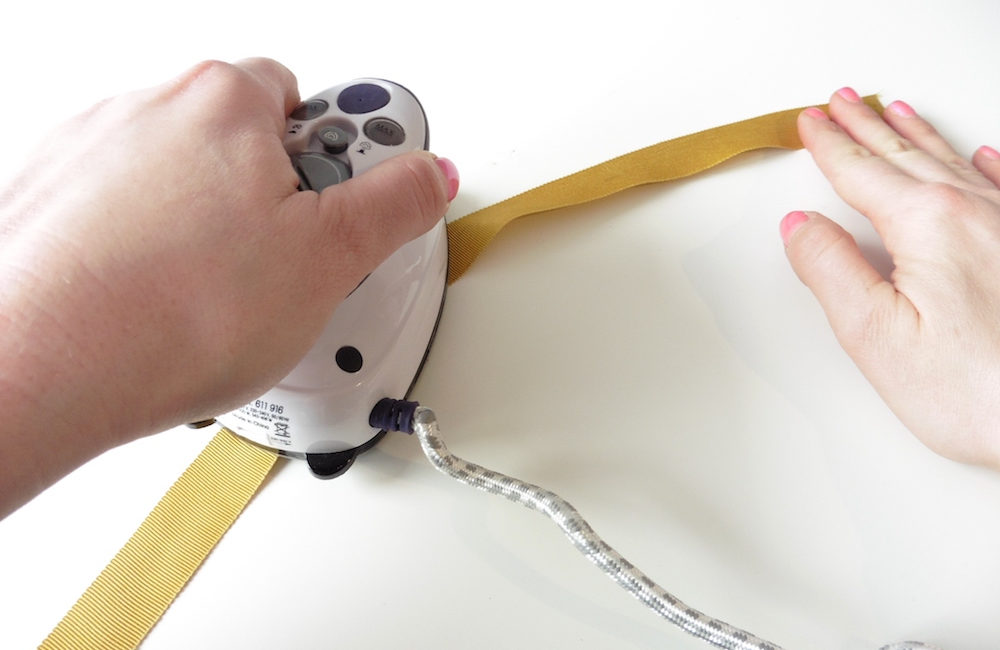
Covering Hairbands
Grosgrain is nice to have on hand for wrapping wire and hairbands. Satin ribbon can also be used for covering any metal in your projects. For wrapping hairbands, using a narrower ribbon width of approximately ¼” (.6cm) will make it easier to get a smooth result. To wrap a hairband, secure the tip of the ribbon to the end of the band with some glue and let dry. Wrap the ribbon with a slight overlap until you reach the center. Trim the excess, secure with glue and let dry. Repeat with the other side of the headband and finish the wrap in the center. Wrapping a headband with ribbon will create a surface to sew a hair comb or trimmings onto.
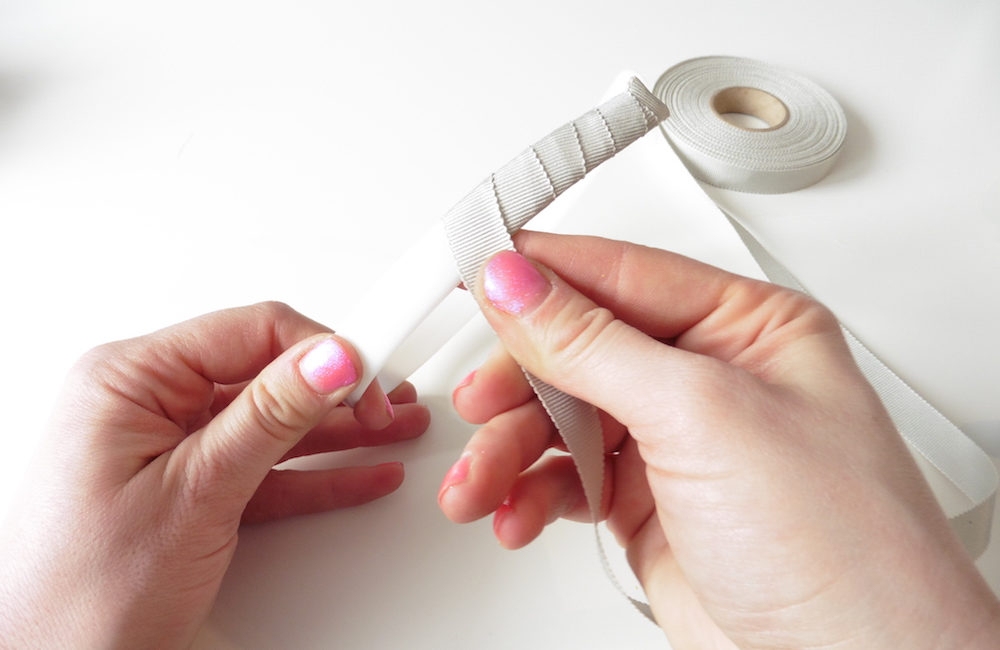
Ribbons Trims
For other hat trims, you can use any type of ribbon you like. There is an endless variety of materials and sizes to choose from. One very traditional ribbon trim is a cockade, like the one pictured below by Michelle@Petershams.
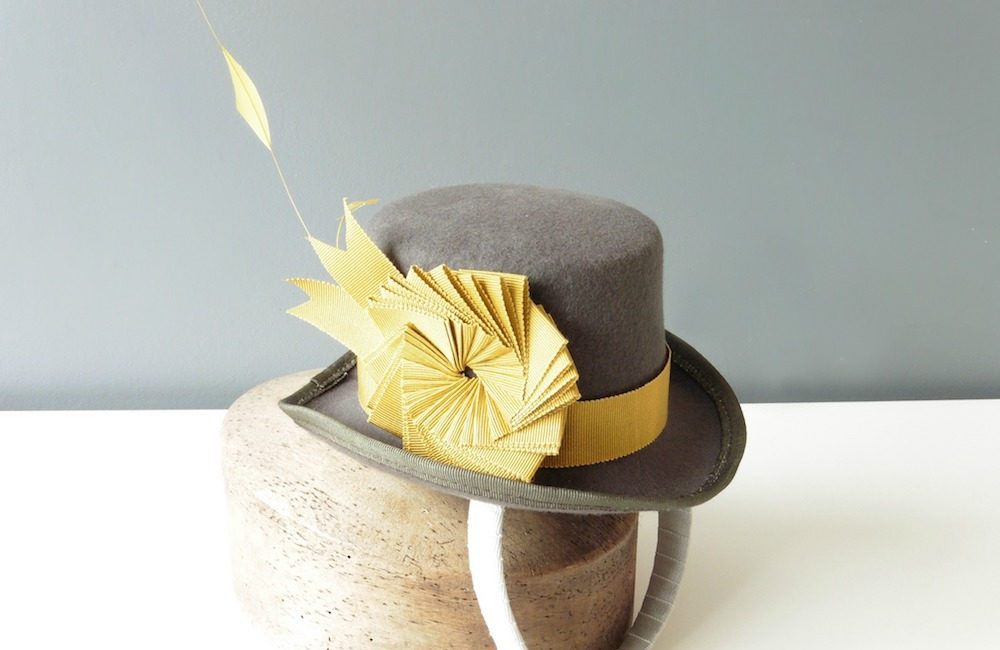
Historically used in military and political attire, these are made by pleating and gathering a colored ribbon into a circular design. Over the years, many variations on the folded ribbon theme have been created, like the Fractured Ribbon Flower by Catherine Kelly (below) or the Petersham headband pictured at the top of this page by Jan Wutkowski (instructions in HATalk Issue 152).
No matter where you are in your millinery journey, you are sure to find yourself using ribbon for hat making sooner or later. To learn more about how to use this essential material, visit the HATalk Project Library.
No matter where you are in your millinery journey, you are sure to find yourself using ribbon for hat making sooner or later. To learn more about how to use this essential material, visit the HATalk Project Library.
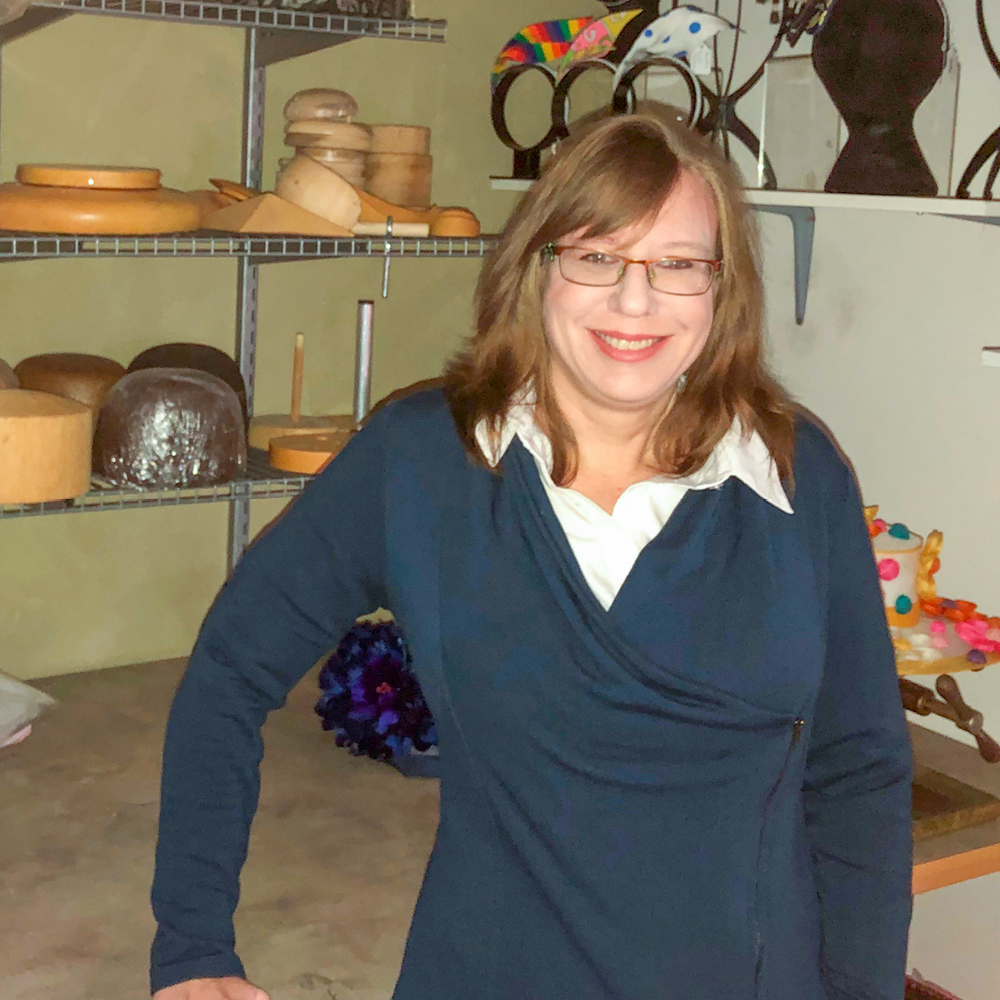
About the Author
Amy Fowler is the creator of the bespoke, California-based Millinery by Amy Fowler label. She also runs Humboldt Haberdashery, an online millinery supplier.
See Amy’s full bio HERE.
Popular Articles
Latest e-Magazine
Featured Supplier

Ribbon for Hat Making
Millinery Ribbon
It might seem like a small detail, but don’t underestimate the importance of ribbon for hat making. In nearly every hat you will see a ribbon headband, even in hats without linings. Ribbon has also been used to make high-end trims for hats, such as extravagant bows, cockades and flowers, for centuries.
There is a vast variety of ribbon to choose from, so it can be overwhelming to find what you need when first starting out as a milliner or hat maker. You will no doubt develop your own style that will influence what types of ribbons you use in your trim designs, but there are some basics that are helpful to keep on hand in your studio.
Petersham & Grosgrain
One of the most confusing things about millinery ribbon is understanding the difference between grosgrain and petersham. You will often see their names used interchangeably, but there is a difference between them. The easiest way to tell the difference is by looking at the edge. Petersham ribbon has a ribbed edge with distinct bumps (as shown in the photo below), while grosgrain has a smoother edge. Both types of ribbon come in a variety of widths and are useful to have on hand for your projects.

Using Ribbon for Hat Making
Headbands and Hat Bands
Petersham is commonly used for making the inner headband, or sweatband, of a hat and for the outer hat band, to cover the join between the crown and the brim. For inner headbands, a 1”(2.5cm) width is generally used. The scalloped edge helps the ribbon to curve when heated, which will help prevent any puckering when lining a round shape.
To curve Petersham ribbon, cut the piece to fit the circumference of the hat, with about a 10 cm overlap to be folded under. Heat an iron to high and begin on one end of the ribbon, pulling it under the iron at an angle. By pulling at an angle you will put a slight curve in the ribbon while it is ironed. Reposition as needed and continue until you get a smooth curve on the whole length of ribbon. The shorter side curve will be the top edge of the ribbon when you sew it into the hat. To hide your stitches, sew in between the bumps (making a tiny stitch about every two bumps).

Covering Hairbands
Grosgrain is nice to have on hand for wrapping wire and hairbands. Satin ribbon can also be used for covering any metal in your projects. For wrapping hairbands, using a narrower ribbon width of approximately ¼” (.6cm) will make it easier to get a smooth result. To wrap a hairband, secure the tip of the ribbon to the end of the band with some glue and let dry. Wrap the ribbon with a slight overlap until you reach the center. Trim the excess, secure with glue and let dry. Repeat with the other side of the headband and finish the wrap in the center. Wrapping a headband with ribbon will create a surface to sew a hair comb or trimmings onto.

Ribbons Trims
For other hat trims, you can use any type of ribbon you like. There is an endless variety of materials and sizes to choose from. One very traditional ribbon trim is a cockade, like the one pictured below by Michelle@Petershams.

Historically used in military and political attire, these are made by pleating and gathering a colored ribbon into a circular design. Over the years, many variations on the folded ribbon theme have been created, like the Fractured Ribbon Flower by Catherine Kelly (below) or the Petersham headband pictured at the top of this page by Jan Wutkowski (instructions in HATalk Issue 152).
No matter where you are in your millinery journey, you are sure to find yourself using ribbon for hat making sooner or later. To learn more about how to use this essential material, visit the HATalk Project Library.
No matter where you are in your millinery journey, you are sure to find yourself using ribbon for hat making sooner or later. To learn more about how to use this essential material, visit the HATalk Project Library.

About the Author
Amy Fowler is the creator of the bespoke, California-based Millinery by Amy Fowler label. She also runs Humboldt Haberdashery, an online millinery supplier.
See Amy’s full bio HERE.
